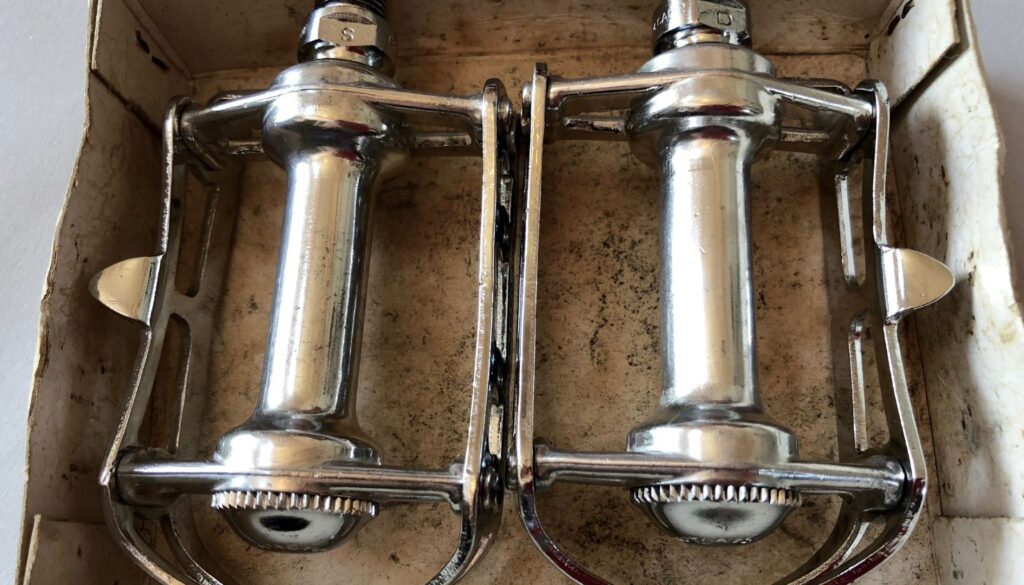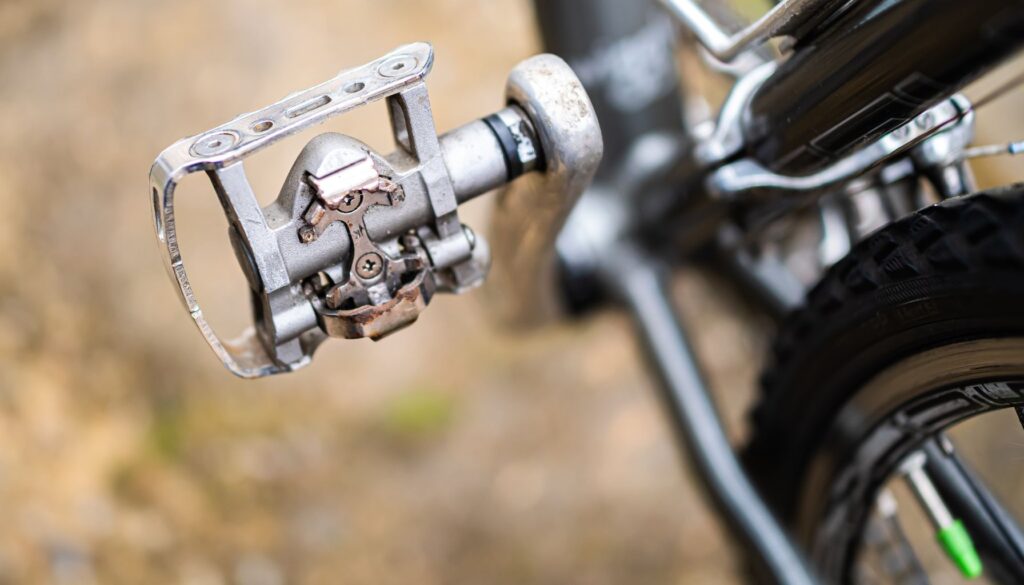Changing bike pedals might seem like a daunting task reserved for seasoned mechanics, but it’s a skill that every cyclist can and should master. Whether you’re looking to upgrade for performance, repair wear and tear, or personalize your ride, this guide is your step-by-step companion. We’ll walk you through the process with clear, easy-to-follow instructions, ensuring you can confidently tackle this essential maintenance task and get back to enjoying your bike rides to the fullest.
Selecting the Right Bike Pedals
Choosing the right bike pedals is crucial for enhancing your cycling experience. Whether you’re a casual rider, a mountain biker, or a road racing enthusiast, the right pedals can significantly impact your performance and comfort. It’s important to consider the type of cycling you’ll be doing, as well as your bike’s compatibility and your personal riding style. Additionally, factors like weight, durability, and ease of use should be taken into account.
Different types of pedals cater to various biking needs. For instance, platform pedals are suitable for casual biking and offer a wide surface area, making them ideal for leisure rides. On the other hand, clipless pedals provide a secure connection between the pedal and a cleat on the bottom of a rider’s shoe, which can enhance power transfer and efficiency for competitive cycling or mountain biking.
Understanding Pedal Types and Their Benefits
It’s essential to understand the differences between pedal types and how they can benefit your riding experience. This knowledge can help you make an informed decision when selecting new pedals. Remember, the best choice depends on your specific needs, riding conditions, and personal preferences.
| Type | Best for | Key Features |
|---|---|---|
| Platform | Casual riding | Wide surface, no special shoes required |
| Clipless | Road racing, mountain biking | Secure attachment, improved efficiency |
| Combination | Commuting, recreational | Flexibility of both platform and clipless |
| Flat | BMX, downhill | Simple design, easy foot removal |
| Toe Clips | Entry-level road biking | Strap or cage for foot stability |
Further Considerations in Pedal Selection
When delving deeper into pedal selection, it’s also worth considering the materials from which the pedals are made, as this can affect both weight and durability. Common materials include plastic, aluminum, and carbon fiber, each offering different benefits. Moreover, ease of maintenance and compatibility with your cycling shoes are important aspects to keep in mind. Reflecting on these additional insights can guide you toward making the best choice for your cycling journey.
Gathering Your Tools
Before you dive into the process of changing your bike pedals, it’s crucial to gather all the necessary tools. This preparatory step ensures a smooth and efficient workflow, preventing any unnecessary interruptions. The fundamental tools required include a pedal wrench or a hex key, depending on your bike’s pedal design. Some pedals can be removed and installed with a standard 15mm pedal wrench, while others may require an 8mm or 6mm hex key. It’s also wise to have a rag and some grease on hand. The rag will be used to clean the threads of the pedals and crank arms, while the grease is essential for lubricating the threads before installation.
Additionally, wearing gloves can protect your hands from grease and grime. Lastly, if available, a bike stand can significantly simplify the process by elevating the bike, providing better access and stability. This setup not only makes the task more comfortable but also allows for a more thorough job, as you can easily rotate the pedals and crank arms as needed. Gathering these tools beforehand will streamline the pedal changing process, making it an effortless task.
- Pedal wrench or hex key (8mm or 6mm)
- Rag for cleaning
- Grease for threads
- Gloves to protect your hands
- Bike stand for easier access (optional but recommended)
Removing the Old Pedals

Once your tools are ready, the next step is to remove the old pedals. This process might seem straightforward, but it requires attention to detail to avoid damage to your bike or tools. First, identify the type of tool you need based on your pedal design. Position your bike securely, either on a bike stand or on the ground with the wheels against a wall for stability. It’s important to remember that bike pedals are threaded differently. The right pedal has a right-hand thread (tightens clockwise, loosens counter-clockwise), while the left pedal has a left-hand thread (tightens counter-clockwise, loosens clockwise).
Using your pedal wrench or hex key, engage the tool firmly with the pedal spindle. For the right pedal, push the tool counter-clockwise to loosen. For the left pedal, push clockwise. If the pedals are particularly tight, applying a penetrating oil and waiting a few minutes can help loosen them. Once loosened, you can usually unscrew the pedals by hand. Be mindful not to strip the threads on the pedal or crank arm by forcing the tool if it doesn’t fit properly. This step is crucial for a successful pedal replacement, as damaged threads can complicate the installation of new pedals.
Tools Needed for the Job
Changing bike pedals might seem like a daunting task, but with the right tools and a bit of know-how, anyone can do it like a pro. The first tool you’ll need is a pedal wrench. This specialized wrench has a long handle to provide the necessary leverage to loosen and tighten the pedals. If a pedal wrench is not available, an adjustable wrench or a set of Allen keys (also known as hex keys) might also do the job, depending on the pedal design.
Next, you’ll need some grease. Applying a small amount of grease to the threads of your new pedals will make them easier to install and prevent them from seizing up, which could be a problem down the line. It’s essential to use a bicycle-specific grease to ensure compatibility with your bike’s components. Lastly, it’s helpful to have a rag on hand to clean up any excess grease and keep your working area tidy.
Before you start, make sure your bike is stable. Use a bike stand if you have one, or lean it against a wall to prevent it from moving. Remember, the left pedal is reverse-threaded, meaning you’ll turn it clockwise to loosen and counterclockwise to tighten. The right pedal uses a standard threading. Paying attention to these details will ensure a smooth process.
Quick Checklist of Tools
| Tool | Use | Notes |
|---|---|---|
| Pedal Wrench | Loosen and tighten pedals | Long handle for leverage |
| Adjustable Wrench/Allen Keys | Alternative to pedal wrench | Depending on pedal design |
| Grease | Lubricate pedal threads | Use bicycle-specific grease |
| Rag | Clean up | Keep area tidy |
| Bike Stand (Optional) | Stabilize bike | Not required but helpful |
Tools and Preparation for Pedal Removal
- Ensure you have the correct tools – either a pedal wrench or a hex key.
- Stabilize your bike, preferably using a bike stand or by leaning it securely against a wall.
- Identify the direction of the threads on each pedal to apply force correctly.
- Position the pedal parallel to the ground for optimal leverage during removal.
- Apply penetrating oil if the pedals are difficult to remove due to rust or grime.
Removing your bike pedals is the first step in the process of changing them. Whether you’re doing routine maintenance, upgrading your pedals, or preparing your bike for transport, knowing how to correctly remove your old pedals is essential. With the right tools and techniques, this task can be performed efficiently and safely, setting the stage for installing your new pedals. Always remember to work patiently and methodically, ensuring each step is performed correctly to avoid any damage or unnecessary wear to your bike’s components.
Installing the New Pedals

After removing your old bike pedals, it’s time to install the new ones, a process that’s straightforward but requires attention to detail to ensure the safety and performance of your bike. First, identify the right pedal for the right side (drive side) and the left pedal for the left side (non-drive side) of the bike. It’s crucial because the threads on the left pedal are reversed, designed to prevent it from unscrewing while you’re pedaling.
Start by greasing the threads of the new pedals. This not only makes installation easier but also prevents the pedals from seizing in the crank arms, ensuring they can be removed in the future. Hand-thread the pedal into the correct crank arm to avoid cross-threading, which can cause significant damage to the threads. Once hand-tightened, use a pedal wrench or a hex key (depending on your pedal design) to securely fasten the pedal. The right pedal should be tightened clockwise, while the left pedal needs to be tightened counterclockwise. Apply firm pressure but avoid over-tightening, as this can strip the threads or make future removal difficult.
Finally, it’s critical to test the pedals by spinning them to make sure they rotate freely without wobbling or resistance. This step ensures that the installation is successful and that your bike is ready for a ride. Proper installation will enhance your cycling experience, ensuring efficiency and safety on your rides.
Essential Tips for Smooth Pedal Installation
- Ensure you have the correct tools – a pedal wrench or hex key.
- Grease the pedal threads to prevent seizing.
- Always start threading by hand to avoid damaging the threads.
- Tighten the pedals to the manufacturer’s recommended torque.
- Check the pedal’s rotation after installation to ensure smooth operation.
Understanding the Importance of Proper Pedal Installation
Proper pedal installation is more than just screwing a pedal into a crank arm. It’s about ensuring the pedal is secure and operates smoothly, which directly impacts the cyclist’s efficiency and safety. A well-installed pedal will provide a solid platform for the cyclist’s foot, maximizing power transfer from the leg to the bike. Moreover, by avoiding cross-threading and over-tightening, cyclists can ensure their pedals remain in good condition, making future removal and maintenance hassle-free. Understanding these nuances can significantly enhance your cycling experience.
Proper Pedal Maintenance Tips
Maintaining your bike pedals is crucial for ensuring a smooth and efficient ride. Regular maintenance not only prolongs the life of your pedals but also enhances your overall cycling experience. The first step in pedal maintenance is to routinely clean them, removing any dirt, grime, or debris that can accumulate over time. This simple act can prevent premature wear and tear.
It is also essential to lubricate the pedal threads and moving parts. Proper lubrication reduces friction, making your pedals easier to remove when necessary and preventing them from seizing up. However, be mindful not to over-lubricate, as excess oil can attract dirt. Checking for any loose parts or damage regularly is vital. Pedals can sustain damage from impacts or simply wear out over time. Inspecting them allows you to address any issues before they become serious problems.
Another key aspect of pedal maintenance is ensuring they are correctly tightened to the manufacturer’s specifications. Over-tightening can strip the threads, while under-tightening can lead to the pedals coming loose while riding. Lastly, consider the type of pedals you have. Different pedals, such as clipless, platform, or cage pedals, may require specific maintenance routines or care.
- Clean pedals regularly to remove dirt and grime.
- Lubricate pedal threads and moving parts appropriately.
- Check for loose parts or damage and address promptly.
- Ensure pedals are tightened to the manufacturer’s specifications.
- Adapt maintenance routines to the specific type of pedals you have.
By following these simple yet effective pedal maintenance tips, you can significantly improve your cycling experience and extend the lifespan of your pedals. Regular attention and care will keep your rides smooth and your pedals functioning like new. Remember, taking care of your bike’s components is not just about maintenance; it’s about ensuring your safety and enjoyment on every ride.



